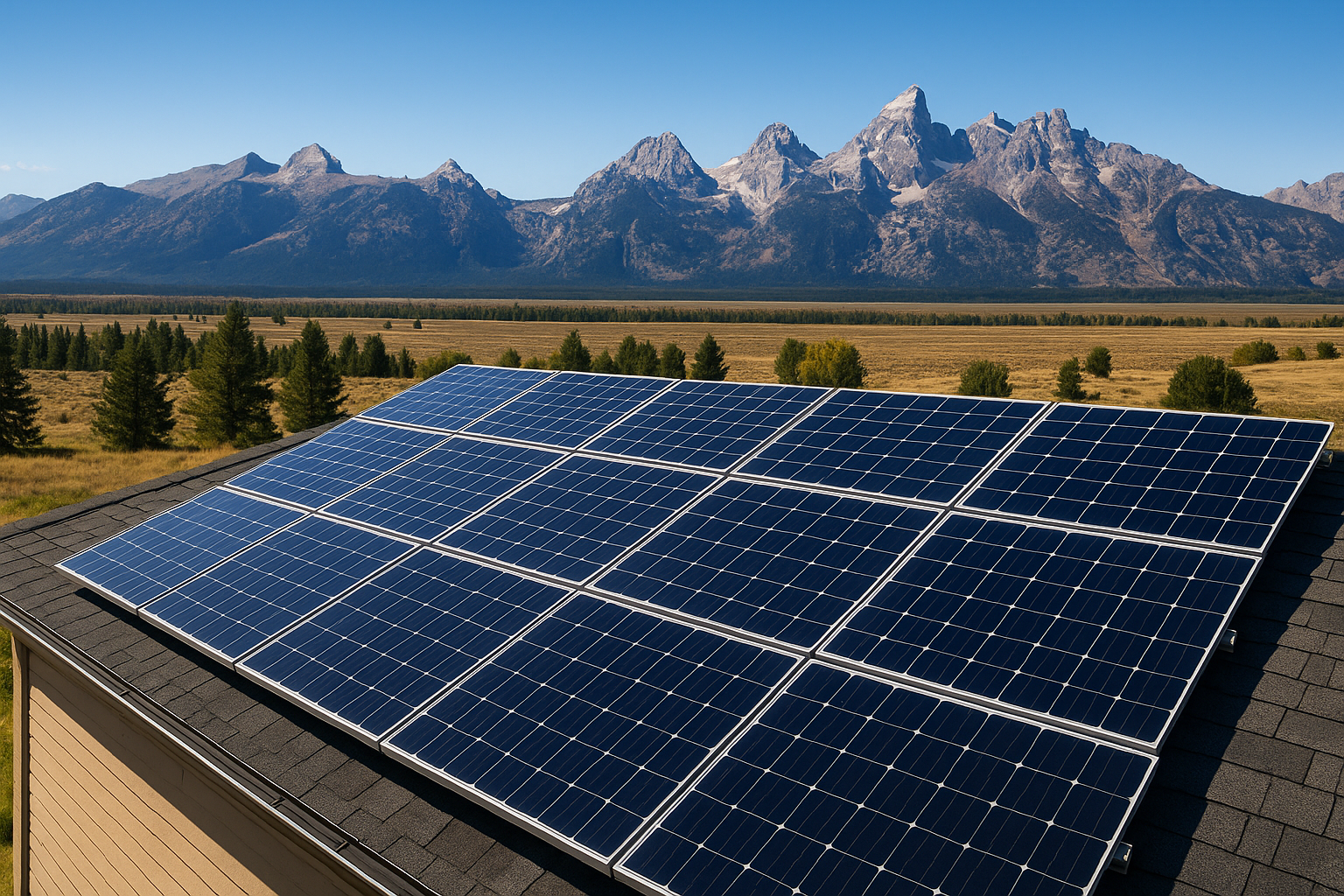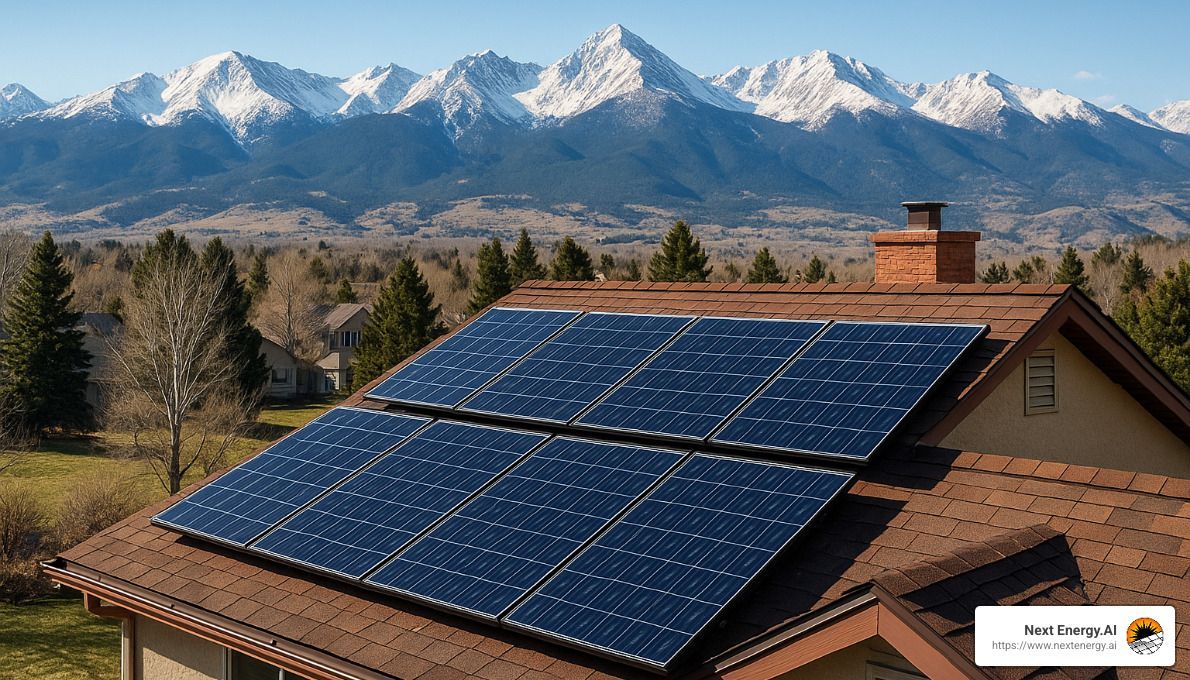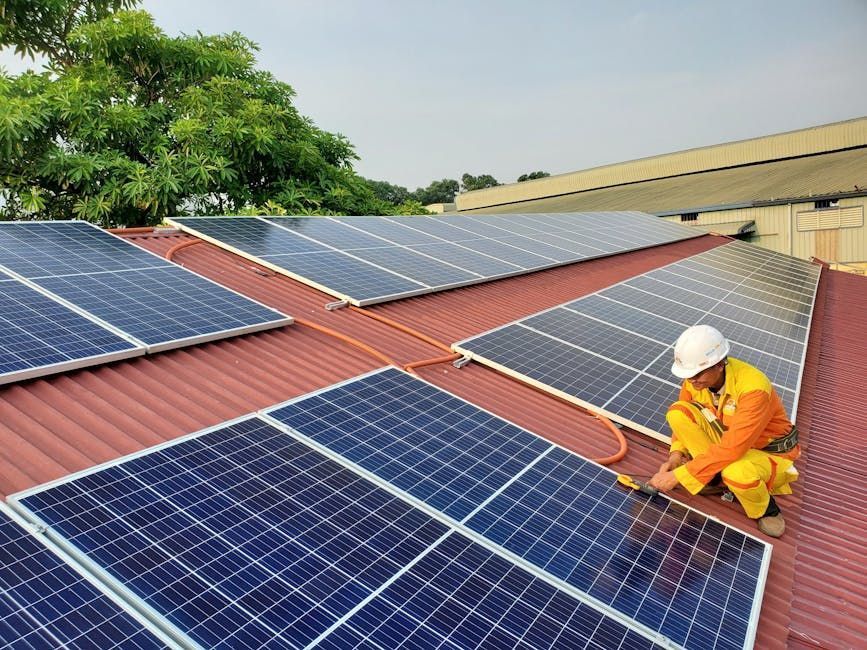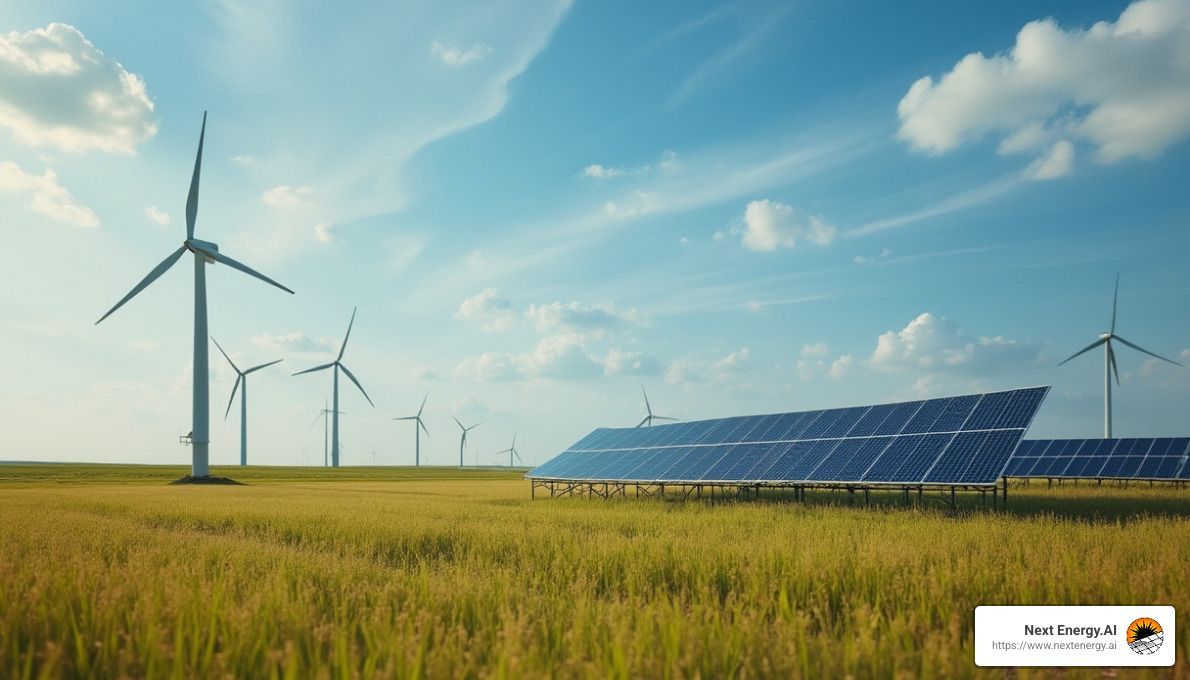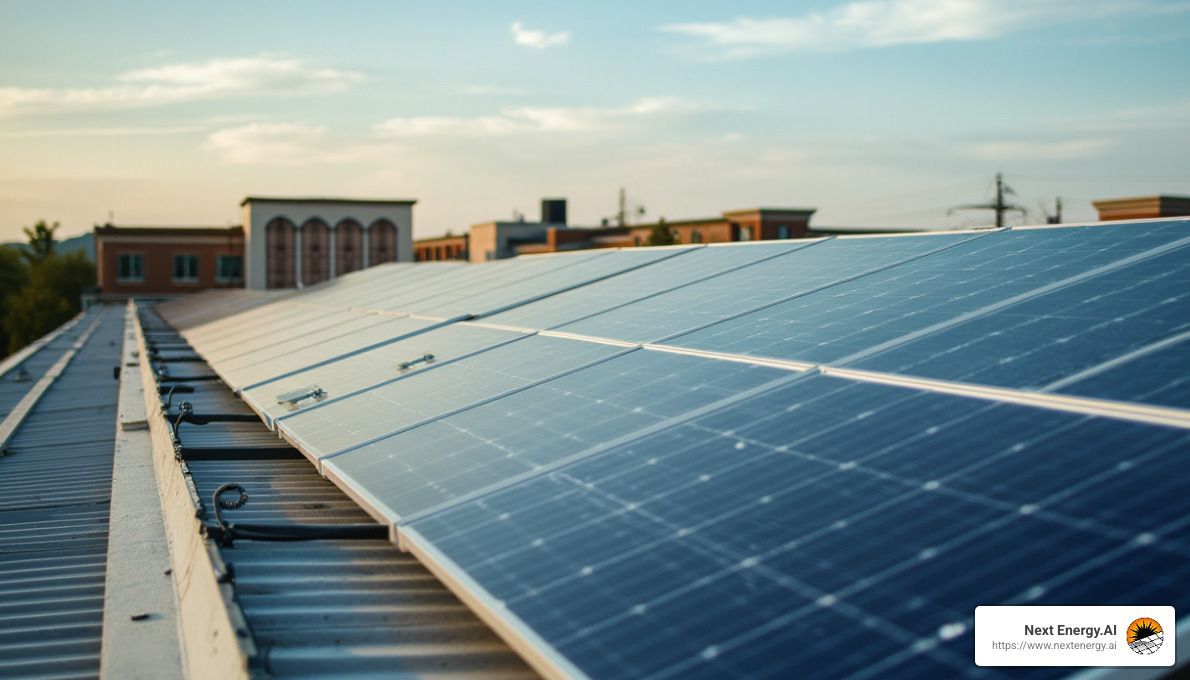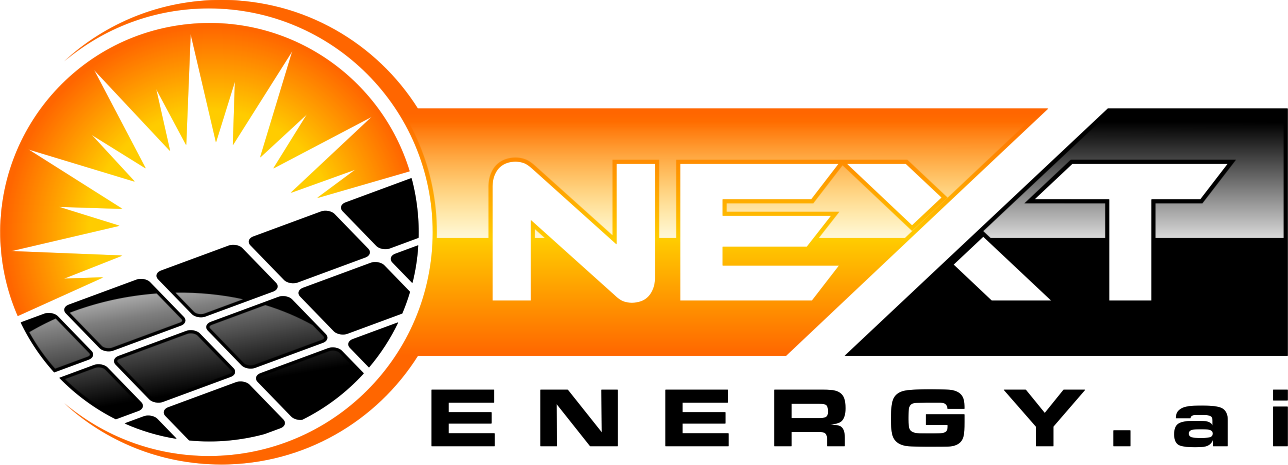Illuminating AI Solar Solutions: The Future of Clean Energy
AI solar solutions are revolutionizing how we harness clean energy. These innovative systems combine the power of artificial intelligence with solar technology to optimize our energy use and lower costs while reducing carbon footprints. Here's a quick overview:
- Optimize Energy Use: AI improves solar panel efficiency by learning and adapting to energy usage patterns.
- Lower Costs: Intelligent predictions help reduce electricity bills by maximizing solar energy savings.
- Reduce Carbon Footprint: The use of clean, renewable energy sources decreases reliance on fossil fuels.
- Integrate Seamlessly: Advanced AI technology supports smooth integration with smart home systems for better energy management.
In today's rapidly evolving energy landscape, AI technologies play a crucial role in enhancing the performance and accessibility of solar energy solutions. They offer eco-conscious homeowners, particularly in Northern Colorado, a practical and innovative way to accept sustainable living.
As Spencer Gordon, the founder of Next Energy.AI, my journey in AI solar solutions began with a passion for sustainable energy. With a strong commitment to quality and local expertise, I've witnessed how these technologies transform homes and contribute to a greener future.
The Role of AI in Solar Energy
Artificial intelligence is reshaping the solar energy industry, making it smarter and more efficient. Here's how AI is playing a pivotal role:
AI Algorithms: The Brain Behind Solar Systems
AI algorithms are the backbone of modern solar energy systems. They analyze vast amounts of data to optimize energy production and consumption. These algorithms learn from patterns in weather, energy usage, and grid demands to make real-time adjustments. This means your solar panels are always working at their best, regardless of changing conditions.
Energy Management: Smarter Use of Solar Power
AI helps manage energy more intelligently. It predicts when and where energy is needed most, ensuring that solar power is used efficiently. For instance, during peak sunlight hours, AI can store excess energy in batteries for later use. This smart energy management reduces waste and lowers electricity bills.
Grid Optimization: Balancing Supply and Demand
The integration of AI in grid optimization is a game-changer. AI systems forecast demand and supply, allowing grid operators to balance these effectively. According to Karen Panetta, AI's ability to handle real-time sensor data is crucial for better forecasting and energy distribution. This leads to fewer blackouts and more stable energy supply.
AI solar solutions are not just about generating power; they are about intelligent energy use. By leveraging AI, Next Energy.AI ensures that every watt of solar energy is maximized, making the future of clean energy brighter and more sustainable.
AI Solar Solutions: Changing Energy Management
AI solar solutions are changing how we manage energy, making systems smarter and more efficient. These solutions use intelligent systems to optimize energy use and ensure maximum efficiency.
Intelligent Systems: The Future of Energy Management
Intelligent systems powered by AI are the future of energy management. They continuously learn and adapt to your energy needs. For example, they can predict when your home will need more power and adjust the solar output accordingly. This smart approach means less energy waste and more savings on your electricity bill.
Energy Optimization: Getting the Most from Solar Power
AI excels at energy optimization. It analyzes data from various sources like weather forecasts and energy consumption patterns. This analysis helps in deciding when to store solar energy and when to use it. As a result, you get the most out of your solar panels, even on cloudy days.
Moreover, AI systems can adjust to seasonal changes, ensuring that your solar panels are always performing at their peak. This adaptability is crucial for maintaining efficiency throughout the year.
Real-World Impact
In practice, these AI-driven systems have shown impressive results. At Schneider Electric's headquarters, AI manages a large fleet of electric vehicles, ensuring efficient energy use without disrupting operations. This kind of intelligent energy management is what makes AI solar solutions so valuable.
AI solar solutions are revolutionizing how we think about energy management. By making systems intelligent and optimizing energy use, they offer a sustainable path forward.
Designing Solar Farms with AI
AI is not just about making energy management smarter; it's also revolutionizing the way we design solar farms. Through techniques like genetic algorithms and particle swarm optimization, AI can significantly improve design optimization.
Genetic Algorithms: Nature's Blueprint
Genetic algorithms (GAs) mimic the process of natural selection. They are excellent for exploring a wide range of design possibilities to find optimal solutions. In the context of solar farms, GAs can help create layouts that maximize sunlight capture and minimize shading between panels. This is crucial for increasing the overall efficiency of the solar farm.
For example, a study demonstrated how GAs could be used to design a photovoltaic (PV) solar farm in Fitchburg, Massachusetts. This approach allowed for the exploration of various configurations, ultimately leading to a design that balanced electricity output and cost-effectiveness.
Particle Swarm Optimization: Inspired by Nature
Particle swarm optimization (PSO) is another bio-inspired technique. It models the social behavior of birds or fish schools to find optimal solutions. In solar farm design, PSO can be used to determine the best arrangement of solar panels to maximize energy output per panel.
This technique was successfully applied to create a sparse design that minimized shadowing effects, which is essential for improving the average electricity output per solar panel.
Design Optimization: Finding the Best Solutions
Both genetic algorithms and particle swarm optimization are powerful tools for design optimization. They allow for the consideration of various constraints and objectives, such as land area, cost, and energy output. By simulating numerous scenarios, AI can identify the best possible design that meets specific goals.
Incorporating these AI techniques into solar farm design can lead to innovative solutions that were previously unimaginable. They provide a methodical approach to balancing different factors, leading to more efficient and cost-effective solar farms.
The use of AI in designing solar farms is a game-changer. By using the power of genetic algorithms and particle swarm optimization, we can achieve better energy efficiency and sustainability in solar farm projects.
Benefits of AI-Improved Solar Solutions
AI is changing solar energy in ways that were once hard to imagine. By making solar systems smarter, AI solar solutions bring several key benefits: energy savings, efficiency, and sustainability.
Energy Savings
AI helps save energy by optimizing how solar systems work. Using smart algorithms, AI can predict energy needs and adjust solar panel activity to match. This means less wasted energy and more savings for users. For instance, AI can analyze weather patterns to predict when solar panels will produce the most energy, allowing users to plan energy consumption better.
Efficiency
AI boosts the efficiency of solar systems by improving how they operate. By analyzing data from various sources, AI can fine-tune solar panel settings to get the best performance. This results in more electricity generated from the same panels. AI can also manage grid connections, ensuring that energy flows smoothly to where it's needed most, minimizing losses.
Sustainability
Sustainability is at the heart of AI-improved solar solutions. By reducing energy waste and increasing efficiency, AI helps lower the carbon footprint of solar systems. This aligns perfectly with global goals for clean and renewable energy. AI also supports sustainability by enabling systems to adapt to changing conditions, such as seasonal variations, ensuring consistent and reliable energy production.
In summary, AI is not just making solar systems smarter; it's making them better. With AI solar solutions, we can achieve significant energy savings, improved efficiency, and improved sustainability, paving the way for a cleaner and greener future.
Frequently Asked Questions about AI Solar Solutions
How is AI used in solar systems?
AI plays a crucial role in making solar systems smarter and more efficient. One of the key uses of AI in solar systems is weather forecasting. By analyzing vast amounts of weather data, AI can predict sunlight availability, which helps in planning energy production and consumption. This means solar systems can adjust their operations to maximize energy capture when the sun is shining and conserve energy when it’s not.
Another important application is grid management. AI helps balance the supply and demand of electricity on the grid. It ensures that energy produced by solar panels is distributed efficiently, reducing strain on the grid and minimizing energy waste. This is especially important as more renewable energy sources are integrated into the grid, which can be unpredictable.
What are AI-generated solar proposals?
AI-generated solar proposals are personalized solutions custom to meet individual customer needs. These proposals are created using advanced AI algorithms that analyze various factors, such as the location of the property, energy usage patterns, and even local weather conditions. By doing this, AI can recommend the most efficient solar setup for each customer, ensuring they get the best possible energy savings and system performance.
These personalized solutions not only help in designing the most effective solar systems but also make the decision-making process easier for customers. They can see clear benefits and potential savings, making the transition to solar energy more attractive.
How can AI help reduce energy costs?
AI helps reduce energy costs in several ways. First, by improving efficiency, AI ensures that solar panels operate at their peak performance. This means more electricity is generated from the same amount of sunlight, lowering the cost per kilowatt-hour.
Second, AI can lead to significant cost savings through better energy management. By predicting energy needs and adjusting operations accordingly, AI minimizes waste and reduces reliance on more expensive energy sources. This is particularly beneficial during peak demand times when electricity prices can soar.
Lastly, AI can help optimize maintenance schedules for solar systems. By predicting when components might fail or need servicing, AI can prevent costly repairs and downtime, ensuring that systems run smoothly and efficiently.
AI solar solutions offer a smart way to cut energy costs while promoting sustainability and efficiency.
Conclusion
At Next Energy.AI, we are committed to shaping the future of solar energy through innovation. Our AI solar solutions transform traditional solar panels into intelligent systems that optimize energy use and maximize efficiency. By integrating advanced AI technology, we provide personalized solutions that meet the unique needs of our customers in Northern Colorado and Southern Wyoming.
Innovation is at the heart of everything we do. With AI, we can predict weather patterns, manage grid demands, and tailor solar proposals to each customer. This leads to greater energy savings and a smoother transition to renewable energy. Our solutions not only improve the performance of solar systems but also make them more accessible and affordable.
Looking ahead, the future of solar energy is bright. As technology continues to evolve, AI will play an even bigger role in driving sustainability and efficiency. At Next Energy.AI, we are excited to be at the forefront of this change, helping our community harness the power of the sun for a cleaner, greener future.
Join us on this journey and find how AI solar solutions can illuminate your path to sustainable energy. Together, we can make a positive impact on the environment and lead the way toward a more sustainable world.



